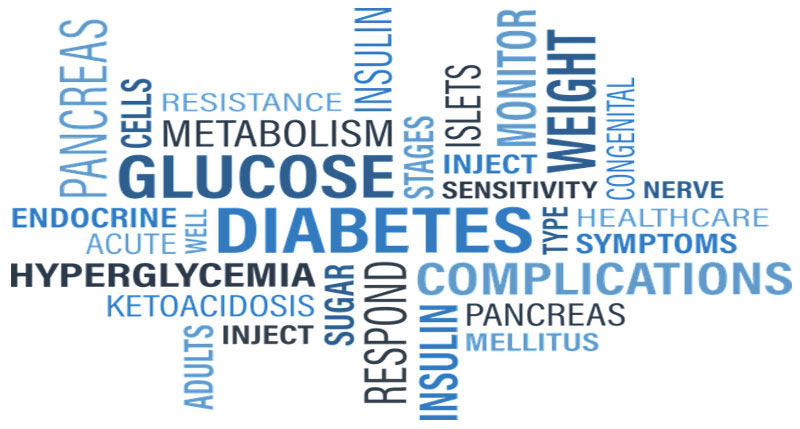November is American Diabetes Month, an ideal time to take a deeper dive into the disease we hear so much about. Approximately 30.3 million Americans have diabetes—that’s about 9.4% of the population. With so many people impacted by this disease, let’s learn more about it.
What is Diabetes?
Diabetes is a metabolic disorder characterized by high levels of sugar, or glucose, in your blood. Having low levels of glucose in your bloodstream is normal, as sugar is the nutrient that provides energy to your body on a cellular level. Your pancreas produces insulin, a hormone that enables cells to convert the glucose in your bloodstream into energy.
However, if your pancreas isn’t making enough insulin or your cells resist the effect of insulin—or if both conditions are present— you’re at high risk for diabetes. Without enough insulin working in your body, you’ll end up with an excess of glucose in your bloodstream, a condition that can cause serious problems.
Diabetes is a chronic, progressive disease. There is no cure, but it can be treated with careful monitoring of your diet, regular testing of blood glucose levels, and medications.
What are the Two Types of Diabetes?
There are two different kinds of diabetes:
- Type 1 Diabetes
Sometimes called juvenile-onset or insulin-dependent diabetes, Type 1 diabetes is typically diagnosed before age 30 and impacts 5-10% of diabetics. The primary cause of Type 1 diabetes is low or no insulin production. It’s not clear why some people don’t produce adequate amounts of insulin—it could be genetic or an autoimmune defect. Type 1 diabetics require regular insulin injections throughout their lifetimes.
- Type 2 Diabetes
Known as adult-onset, or non-insulin dependent diabetes, Type 2 diabetes is diagnosed after age 30, typically, and is the more prevalent form of the disease. Between 90-95% of all diabetics are Type 2 diabetics. The cause of this type of diabetes is that the pancreas doesn’t produce enough insulin, or the cells in your body can’t use it efficiently—or both. This results in glucose levels rising uncontrollably in the bloodstream.
What is Pre-Diabetes?
If you’re among the 86 million Americans classified as pre-diabetic, your blood sugar levels are higher than usual but aren’t quite high enough to be diagnosed with diabetes. If you fall into this category, it’s important to take significant steps to prevent the condition from progressing into diabetes. These steps include increasing exercise and activity, losing weight, and altering your diet to focus on foods with a low glycemic index.
Obesity and living a sedentary lifestyle are primary risk factors for diabetes, so lowering body weight and increasing activity level are smart strategies for decreasing your risk.
Some symptoms of diabetes include being overly thirsty, urinating frequently, increased appetite and unexplained weight loss. Having a blood glucose level over 200mg/dL is the diagnostic level for diabetes.
How Does Diabetes Impact the Body?
Too much blood sugar in the bloodstream creates a problem for your body’s blood vessels, causing damage and complications. Diabetes can cause severe damage to your eyes, nerves, heart, kidneys and almost every system in the body. Diabetes has a significant impact on the cardiovascular system, doubling your risk of having a heart attack or stroke. Patients who go untreated or don’t regulate their blood sugar suffer complications including coronary heart disease, loss of vision—either partial or total, digestive issues, trouble becoming pregnant, and others.
Because of the impact diabetes has on the tiny blood vessels in the eyes, optometrists are often the first healthcare professional to notice indicators of the disease. In 2014, optometrists diagnosed 401,000 cases of diabetes in patients who didn’t know they were suffering from the disease, likely helping to prevent many of these patients from experiencing further health challenges.
Diabetes is the seventh leading cause of death for Americans; in 2015, more than 252,000 death certificates listed diabetes as one of the causes of death, and nearly 80,000 of those attributed diabetes as the underlying cause of death.
If you or a loved one are diagnosed with this disease, it can be alarming. However, your outcomes are up to you. Patients who keep their blood sugar levels regulated can enjoy a long, healthy life.

